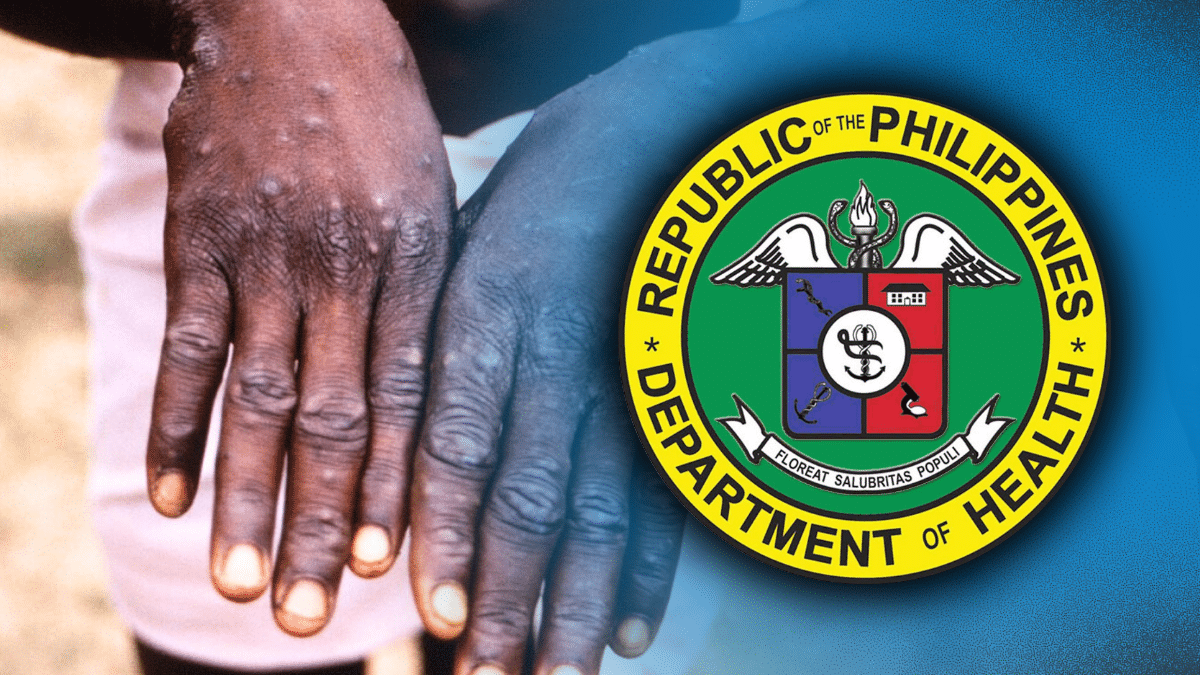
The Department of Health (DOH) releases the updated guidelines to prevent, detect, and manage mpox (formerly monkeypox) amid the disease’s resurgence worldwide. Photo from Agence France-Presse/INQUIRER FILES
MANILA, Philippines — The Department of Health (DOH) released the updated guidelines to prevent, detect, and manage mpox (formerly monkeypox) amid the disease’s resurgence worldwide.
Department Memorandum No. 2024-0306, or the Updated DOH Mpox Guidelines, “provides a sufficient level of operational detail so that health system actors at all levels will have standard protocols to fight the re-emerging disease,” according to the agency.
“After thorough consideration of best available evidence, expert guidance, and domestic experience from the recent pandemic, the Department of Health (DOH) has published its updated interim guidelines on the prevention, detection, and management of Mpox,” the DOH said in a statement Thursday.
READ: PH e-travel form now includes mpox screening questions, says DOH
The modified guidelines to deal with mpox include the following:
Prevention
- All individuals shall avoid skin-to-skin or intimate contact with a person who is a suspected, probable, or confirmed carrier of the virus.
- If contact is unavoidable, the person must adhere to proper prevention and control measures, such as using personal protective equipment (PPE).
- Observe frequent and proper hand hygiene techniques, and make sure that objects or surfaces that may be contaminated by the virus are cleaned thoroughly.
- Avoid contact with animals, particularly mammals, that may be carriers of the virus.
- Healthcare personnel attending to a suspected, probable, or confirmed mpox case must wear PPE.
Detection
- Healthcare workers (HCWs) shall be mandated to observe a “high index of suspicion” when evaluating individuals with unexplained rash, mucosal lesions, or lymphadenopathy.
- All HCWs, public health authorities, disease reporting units, and institutions or offices must notify the DOH of any suspected, probable, or confirmed mpox case within 24 hours of consultation.
- Specimen of confirmed mpox cases shall be sequenced by the Research Institute for Tropical Medicine.
Isolation and quarantine
- Close contacts shall be monitored, or self-monitored, for 21 days from the last contact with suspected, probable, or confirmed mpox case.
- Suspected, probable, or confirmed mpox cases with mild symptoms and not a high risk for complications can be isolated at home for at least 21 days.
- Patients at high risk for complications, such as children, pregnant women, and those with comorbidity, or those with severe mpox, must be admitted to the hospital.
Treatment
- Patients must be provided with drugs to alleviate mpox symptoms such as antipyretics for fever, analgesics for general pain, and stool softeners for patients with proctitis.
Reintegration
- Clearance to return to work after recovering from mpox or from isolation must be obtained from a physician.
- Mental and psychological support must be given to the affected individual to ensure overall well-being during and after recovery.
Disposal of dead bodies
- Handling of the remains of the person suspected or confirmed to have had mpox must follow appropriate measures, such as wearing PPE and performing thorough sanitation.
READ: 2 new mpox cases reported in PH; total rises to 14
On Wednesday, the DOH reported the detection of two more mpox cases. Currently, the total number of mpox cases in the Philippines stood at 14 since July 2022.
But the DOH noted that only five of the 14 cases remain active and that the patients carry the milder type MPXV clade II.
The newly detected cases are a 26-year-old female from the National Capital Region or Metro Manila and a 12-year-old male from Calabarzon.

